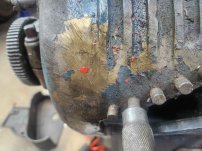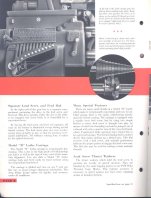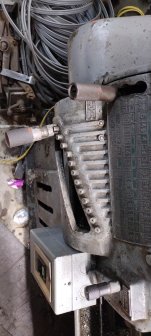Chester
Back gear selection on the P&W isn't obvious until you spot that there are two levers involved.
The one on top behind the head pulls the spindle out of direct gear, so it spins freely. Same effect as the sliding pin locking back gear to cone pulleys on lighter machines such as SouthBends and, presumably, your Atlas.
Raising the lever poking out towards you underneath the spindle turns an eccentric to lift the back gear shaft bringing the back gears into engagement. Again same principle as lighter machines where the back gear shaft is eccentric.
Most larger and modern gear head lathes do both the disengagement of direct drive on one lever. Usually with a neutral position between direct and back gears where the spindle turns freely.
There is a pdf copy of the earlier 20" plain bearing model B parts manual floating around the internet. Have you found it? I think John sent me mine. Probably the best resource out there for whats what and what goes where.
The 12 x 30 with anti-friction (roller) bearing headstock is essentially identical except for the obvious differences in the bearing area.
Wonderfully drawn in an old fashioned style that doesn't take kindly to being reduced to A4 size.
If I ever decide to treat mine to a well earned and justly deserved go through and re-decoration I shall do an A3 size print out. The headstock drawing is particularly lovely but takes a deal of squinting to figure out what is going on where. Bent sections where not everything is on the same plane may be diagrammatically cleaner but brain engagement is essential. Not completely in love with how the part numbers are tabulated either.
Clive





